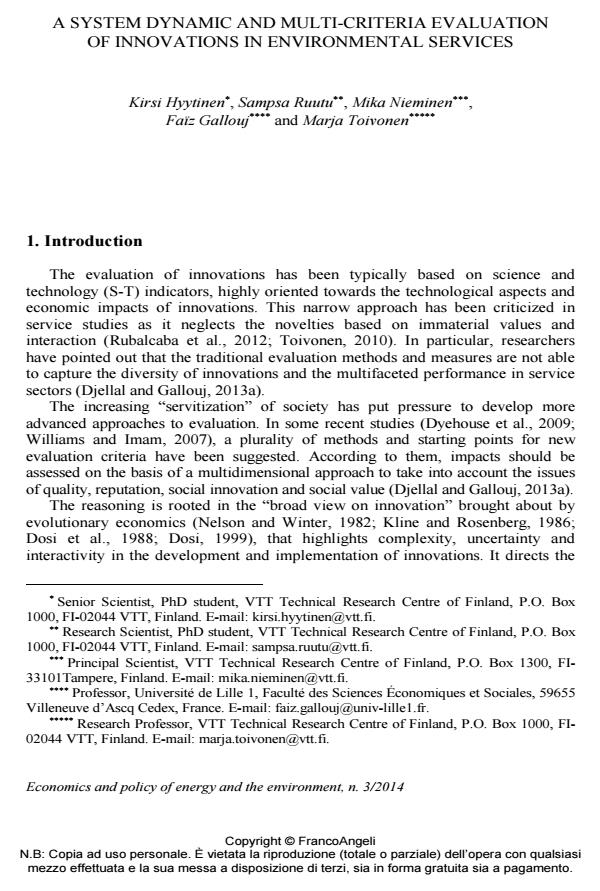A system dynamic and multi-criteria evaluation of innovations in environmental services
Titolo Rivista ECONOMICS AND POLICY OF ENERGY AND THE ENVIRONMENT
Autori/Curatori Kirsi Hyytinen, Sampsa Ruutu, Mika Nieminen, Faiz Gallouj, Marja Toivonen
Anno di pubblicazione 2015 Fascicolo 2014/3
Lingua Inglese Numero pagine 24 P. 29-52 Dimensione file 1583 KB
DOI 10.3280/EFE2014-003003
Il DOI è il codice a barre della proprietà intellettuale: per saperne di più
clicca qui
Qui sotto puoi vedere in anteprima la prima pagina di questo articolo.
Se questo articolo ti interessa, lo puoi acquistare (e scaricare in formato pdf) seguendo le facili indicazioni per acquistare il download credit. Acquista Download Credits per scaricare questo Articolo in formato PDF

FrancoAngeli è membro della Publishers International Linking Association, Inc (PILA)associazione indipendente e non profit per facilitare (attraverso i servizi tecnologici implementati da CrossRef.org) l’accesso degli studiosi ai contenuti digitali nelle pubblicazioni professionali e scientifiche
The purpose of this paper is to study the challenge of evaluation in the context of systemic innovations in which services are a core element. The paper argues that the traditional evaluation methods and measures are not able to capture neither the diversity of innovations in services and systems nor the multifaceted dimensions of performance resulting from these innovations. In order to contribute to a more purposeful evaluation practices and methods, a new combinatory approach is suggested based on multi-criteria and system dynamic perspectives. This approach is illustrated in the context of environmental services, using an environmental data platform as a case example.
Parole chiave:Multi-criteria evaluation, system dynamic, service innovation, systemic innovation, environmental services, environmental data platform
Jel codes:O33, O44, Q56
Kirsi Hyytinen, Sampsa Ruutu, Mika Nieminen, Faiz Gallouj, Marja Toivonen, A system dynamic and multi-criteria evaluation of innovations in environmental services in "ECONOMICS AND POLICY OF ENERGY AND THE ENVIRONMENT" 3/2014, pp 29-52, DOI: 10.3280/EFE2014-003003